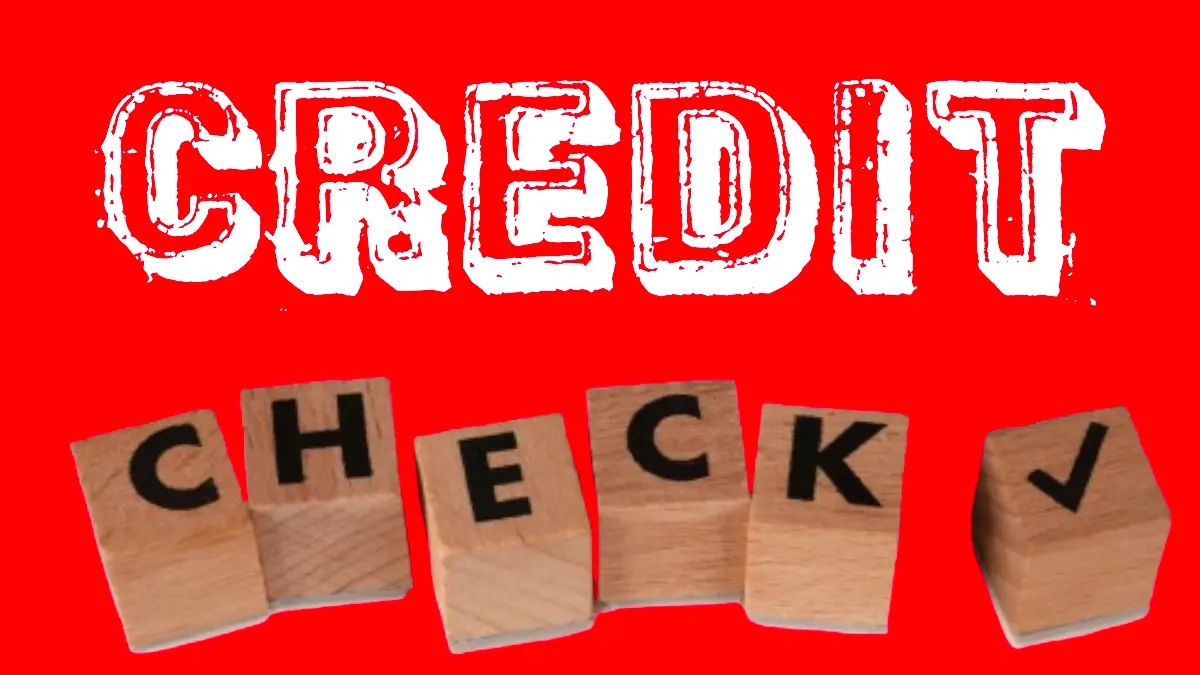Understanding Your Credit Report: The Key to Financial Health

In today’s financial landscape, understanding your credit report is crucial for anyone looking to manage their debts effectively and secure favorable lending terms. Often described as a financial report card, your credit report provides a detailed overview of how you have handled your debts in the past. This invaluable document serves not only as a reflection of your financial behavior but also as a critical tool that lenders use to assess your creditworthiness.
What is a Credit Report?
Your credit report contains essential personal information, including your name, address, Social Security number, and employment history. It also details your credit accounts—such as credit cards, mortgages, and loans—as well as any inquiries made into your credit history and public records like bankruptcies or liens. This information is meticulously compiled by three major credit reporting agencies: Equifax, Experian, and TransUnion. Each agency then assigns you a three-digit credit score that summarizes your financial reliability.
Personal Information in Your Credit Report
The personal information section of your credit report serves as a means of identifying you and confirming your identity. Although these details do not directly influence your credit score, they play a critical role in ensuring that the report accurately reflects your financial history. Here’s a closer look at what information is typically included:
- Full Name: This includes not only your legal name but also any nicknames or aliases that may be associated with your accounts. Ensuring consistency across all records helps prevent confusion.
- Addresses: Your current address, as well as any previous addresses, are listed here. This information helps creditors trace your residency history, which can be relevant for assessing stability.
- Birth Date: Your date of birth is used primarily for identification purposes to distinguish you from others with similar names.
- Telephone Numbers: Both current and previous phone numbers may be included in this section, providing additional contact avenues for creditors.
- Names of Co-Applicants or Guarantors: If you have shared accounts or loans with others, their names may also appear on your report.
- Employment Information: Current and past employment details are included to provide a snapshot of your job stability and income sources.
- Personal Statements: You have the option to include personal statements that can add context to your credit history—such as reasons for late payments or alerts like a credit freeze.
It’s worth noting that different credit bureaus may collect and report this data differently; hence, it’s common for reports from various agencies to present slightly different information.
The Importance of Accuracy
While it might seem trivial compared to other aspects of your credit report, maintaining accurate personal information is crucial for several reasons:
- Identity Verification: Accurate details help lenders verify your identity quickly and efficiently, reducing delays in loan approvals or account openings.
- Preventing Fraud: Keeping your information updated can help protect against identity theft. If outdated addresses or contact numbers linger on your report, they could potentially mislead creditors or allow fraudsters to exploit gaps in security.
- Creditworthiness Assessment: Although personal information does not directly impact scores, discrepancies can raise red flags during assessments by lenders who might question the validity of the entire report if they notice inconsistencies.
Credit Accounts: The Foundation of Your Credit Report
Credit accounts refer to the various loans and credit lines you have opened with financial institutions. They are categorized into several types, including revolving accounts (like credit cards) and installment accounts (such as mortgages and auto loans). Each account provides valuable information about how you manage debt and repayment.
Account Information
Your credit report includes essential details about each of your credit accounts. This information helps paint a comprehensive picture of your financial behavior:
- Accounts Overview: Both current/open and closed accounts are listed.
- Types of Accounts: Differentiates between revolving and installment loans.
- Account Statuses: Indicates whether an account is active or inactive.
- Opening Dates: Shows when each account was established, which can affect your credit history length.
- Credit Limits: Displays the maximum amount you can borrow on revolving accounts.
- Balances: Provides current balances as reported by creditors.
Payment Information
Equally important is how you handle payments on these accounts, which directly influences your credit score:
- Payment Dates: Records when payments are made.
- Payment Status: Indicates whether payments are current or delinquent.
- Past Due Amounts: Highlights any overdue payments that could signal potential risk to lenders.
- Monthly Payments: Details required monthly payments for installment loans.
- Late Payments: Lists any instances of late payments along with amounts and dates.
This payment information is critical because it directly contributes to your overall creditworthiness.
The Importance of Credit Scores
Data from your credit accounts feeds into your credit score—an essential metric used by lenders to evaluate your risk as a borrower. The two most commonly used scoring models are FICO and VantageScore 3.0, both of which utilize different weightings for various factors drawn from your credit report.
For instance, payment history is often weighted most heavily in determining your score, followed closely by amounts owed and length of credit history. Understanding these scoring models can help you strategize ways to improve or maintain a healthy score over time.
Credit Account Data in FICO and VantageScore Models
The FICO Score Breakdown
The FICO score, a long-standing standard in the credit industry, is calculated based on five key components:
- Payment History (35%): This is the most significant factor in determining your FICO score. It reflects whether you have paid past credit accounts on time. Late payments, defaults, and bankruptcies can significantly impact your score.
- Amounts Owed (30%): This component evaluates your total debt compared to your available credit limits, commonly referred to as your credit utilization ratio. High utilization can be a red flag for lenders.
- Length of Credit History (15%): A longer credit history typically suggests a more reliable borrower. This aspect considers how long your accounts have been active and when you opened your oldest account.
- Credit Mix (10%): Lenders like to see a diverse mix of credit types, including installment loans (like car loans) and revolving accounts (like credit cards). A varied portfolio can positively influence your score.
- New Credit (10%): This measures how many new accounts you’ve opened recently and how many inquiries have been made into your credit report. Too many new accounts in a short period may signal risk to lenders.
Insights into VantageScore 3.0
While VantageScore 3.0 has gained popularity as an alternative to FICO, it employs a different methodology for calculating scores:
- Payment History (40%): Similar to FICO, payment history remains the most important factor but carries slightly more weight in VantageScore 3.0.
- Depth of Credit (21%): This unique factor combines the age of your accounts with the variety of credit types you hold, providing a more comprehensive view of your credit profile.
- Credit Utilization (20%): Like FICO’s amounts owed category, this assesses how much of your available credit you are using, underscoring its importance across both models.
- Balances (11%): This refers to the total outstanding balances on all open accounts, which helps lenders understand your overall debt level.
- Recent Credit (5%): Reflecting recent inquiries and new accounts opened over the past year, this metric allows lenders to gauge any sudden changes in borrowing behavior.
- Available Credit (3%): This component considers how much unused credit you have available across all accounts—a higher availability often indicates lower risk.
Key Takeaways for Consumers
Understanding these scoring models is crucial for consumers aiming to improve their financial health and enhance their chances of securing favorable loan terms:
- Timely Payments Matter: Consistently paying bills on time is the most effective way to boost both FICO and VantageScore ratings.
- Manage Your Debt Wisely: Keep track of your credit utilization ratio—ideally below 30%—to maintain a favorable score.
- Diversify Your Credit Portfolio: A mix of different types of credit can enhance both FICO and VantageScore evaluations.
- Monitor Your Accounts: Regularly reviewing your credit report can help you identify areas for improvement before applying for new credit.
Credit Inquiries
Credit inquiries are requests made by lenders or other entities to review your credit report when you apply for credit. They provide insight into your credit history and help lenders determine whether to extend credit or adjust terms based on perceived risk. Understanding the two types of inquiries—hard and soft—is vital for anyone looking to maintain a healthy credit profile.
Hard Inquiries
A hard inquiry occurs when you apply for a new line of credit, such as a credit card, loan, or mortgage. Each time you submit an application, the lender will request access to your credit report, resulting in a hard inquiry being recorded. Key points about hard inquiries include:
- Visibility: Hard inquiries are visible on your credit report and include details such as the name of the lender and the date of the inquiry.
- Duration: These inquiries typically remain on your report for up to two years. However, their impact on your credit score diminishes after one year.
- Impact on Credit Score: Hard inquiries can have a negative effect on your FICO score as they suggest that you may be taking on more debt. As part of the “new credit” category in FICO scoring models, too many hard inquiries within a short period can signal risk to lenders.
Soft Inquiries
In contrast, soft inquiries occur when a check is conducted for purposes other than assessing creditworthiness for new loans or lines of credit. Examples include promotional offers from lenders, pre-approval checks, or even self-checks by consumers monitoring their own credit reports. Here are some important aspects of soft inquiries:
- Non-Intrusive: Soft inquiries do not affect your credit score and are not visible to potential lenders.
- Duration: Similar to hard inquiries, soft inquiries can remain on your report for one to two years.
- Common Uses: These checks are often used by companies as part of marketing strategies or by individuals checking their own scores without impacting their overall credit health.
The Importance of Understanding Inquiries
Recognizing the difference between hard and soft inquiries is crucial for managing your financial reputation effectively. While it’s natural to want to explore various borrowing options, being aware that multiple hard inquiries can negatively affect your score can help you make more strategic decisions.
For example, if you’re considering applying for several loans or credit cards in a short period, it may be wise to space out those applications or limit them altogether. On the other hand, engaging with soft inquiries—like checking your own score—can empower you without any risk to your overall financial standing.
Public Records
Public records are documents or pieces of information that are filed with a governmental agency and are available for public access. In the context of personal finance, these records often pertain to negative events in your financial history. They reflect serious financial issues that can affect your ability to secure loans or credit.
Understanding these records is crucial for anyone seeking to maintain or improve their credit score. They typically appear towards the end of your credit report and may include:
- Bankruptcies: A legal proceeding in which an individual or business declares inability to pay outstanding debts.
- Tax Liens: A claim against assets due to unpaid taxes.
- Judgments: A court’s decision regarding a lawsuit, often related to debt collection.
- Foreclosures: The legal process by which a lender takes possession of property due to failure to repay a mortgage.
- Garnishments: Court orders allowing creditors to take funds directly from a debtor’s wages or bank accounts.
- Lawsuits: Legal actions taken by one party against another.
Each of these items can signal potential financial instability and may raise red flags for creditors reviewing your credit report.
Duration of Public Records on Your Credit Report
One critical aspect of public records is their duration on your credit report. The length of time that these records remain visible can vary based on the type:
- Bankruptcies: These can linger on your report for up to ten years from the date filed.
- Tax Liens: Generally, tax liens can stay for up to seven years after they are paid; however, if unpaid, they may remain indefinitely until resolved.
- Judgments: Typically, judgments appear for seven years from the filing date.
- Foreclosures: Like bankruptcies, foreclosures can also impact your report for up to seven years.
- Garnishments and Lawsuits: These negative marks usually remain for seven years as well.
Understanding these timelines is essential for planning your financial recovery after facing such setbacks.
The Implications of Public Records on Your Credit Health
Public records can have significant repercussions on your overall credit profile. Creditors often view these items as indicators of risk when assessing loan applications or extending lines of credit. A history marked by bankruptcies or foreclosures could lead to higher interest rates or outright denial of credit.
Moreover, having multiple public records may not only affect your ability to borrow but could also influence other aspects of life such as renting an apartment or securing employment in certain fields where background checks are standard practice.
Steps to Manage Public Records
If you find yourself dealing with negative public records, there are steps you can take:
- Monitor Your Credit Report Regularly: Stay informed about what’s being reported and check for inaccuracies.
- Work Toward Financial Rehabilitation: Focus on rebuilding your credit through responsible financial behaviors like timely bill payments and reducing outstanding debts.
- Seek Professional Guidance: If necessary, consider consulting with a financial advisor or credit counselor who can provide tailored strategies based on your situation.
Protecting Your Identity: The Importance of a Credit Freeze
A credit freeze, also known as a security freeze, is a tool that allows you to restrict access to your credit report. When a freeze is in place, lenders cannot access your credit report to evaluate your creditworthiness for new accounts. This means that even if someone has your personal information, they cannot open new lines of credit in your name without lifting the freeze first.
Why Consider a Credit Freeze?
There are several compelling reasons to consider placing a credit freeze:
- Protection Against Identity Theft: A credit freeze is an effective line of defense against identity thieves who may attempt to open accounts using your stolen information. By preventing access to your credit report, you reduce the likelihood of unauthorized account openings.
- Peace of Mind: Knowing that your credit report is secure can provide significant peace of mind. In an era where data breaches are common, taking proactive steps can help alleviate anxiety about potential identity theft.
- Simple and Free Process: Implementing a credit freeze is relatively straightforward and does not cost anything. You can initiate a freeze by contacting the major credit bureaus—Experian, TransUnion, and Equifax—either online or via phone.
How to Place and Lift a Credit Freeze
Placing a credit freeze involves contacting each of the three major credit bureaus individually. Here’s how you can do it:
- Gather Your Information: Before you reach out, have the necessary information ready, such as your Social Security number, date of birth, address history for the past two years, and any identification documents required by the bureau.
- Contact Each Bureau:
- Experian: Visit their website or call their customer service.
- TransUnion: Follow similar steps as with Experian.
- Equifax: Again, use their website or customer service.
- Receive Confirmation: After successfully placing a freeze, each bureau will provide you with a unique PIN or password that you’ll need when you want to lift the freeze.
Lifting the Freeze
If you need to apply for new credit—whether it’s a loan for a car or a mortgage—you will need to temporarily lift or permanently remove the freeze on your credit report:
- Decide on Duration: You can choose to lift the freeze temporarily (for a specific creditor) or permanently (until you decide otherwise).
- Use Your PIN/Password: When contacting the bureaus again to lift the freeze, have your PIN or password handy for authentication.
- Timing Matters: Keep in mind that while lifting a freeze is typically quick (often instantaneous online), it may take longer if done via phone or mail.
Common Types of Errors on Credit Reports
Credit report errors can take various forms, and recognizing them is the first step towards rectifying any inaccuracies. Below are some of the most prevalent types of mistakes you may encounter:
1. Incorrect Identifying Information
One of the most frequent issues found on credit reports involves incorrect identifying information. This can include misspelled names, wrong addresses, and incorrect telephone numbers. Such discrepancies can lead to confusion about your credit history and may even affect your credit score.
2. Misreported Account Information
Misreported account information is another major category of errors. This can manifest in several ways:
- Closed Accounts Listed as Open: Sometimes, creditors fail to update the status of closed accounts, which may misrepresent your current financial situation.
- Incorrect Ownership Information: Accounts that do not belong to you may be incorrectly attributed, which can complicate your credit profile.
- Payment History Errors: Payments inaccurately reported as late can severely impact your score.
- Duplicate Debts: Seeing the same debt listed multiple times can also distort your perceived level of indebtedness.
3. Incorrect Account Data
Errors related to account data can significantly misrepresent your financial status:
- Incorrect Account Balances: An inflated balance could make you appear more indebted than you are.
- Incorrect Credit Limits: If your credit limits are reported inaccurately, it could affect your credit utilization ratio, a key factor in determining your credit score.
4. Identity Theft Indicators
In the age of digital information, identity theft has become an alarming reality. Be vigilant for signs that indicate potential identity theft:
- Names or addresses linked to your report that do not belong to you.
- Accounts that you did not open appearing on your report.
Such indicators require immediate action to mitigate further damage and restore accuracy.
Causes of Credit Report Errors
Understanding why these errors occur can empower consumers to take proactive measures. Common causes include data entry mistakes made by the credit bureau or creditors, as well as fraudulent activities related to identity theft. Additionally, outdated information may linger on reports if creditors fail to update records promptly.
Taking Action Against Errors
If you discover an error on your credit report, addressing it quickly is crucial. Here’s how you can proceed:
- Obtain Your Credit Report: Start by obtaining a free copy of your credit report from annualcreditreport.com.
- Identify Errors: Review it thoroughly for any discrepancies mentioned earlier.
- Dispute Inaccuracies: File a dispute with the respective credit bureau(s) online or via mail with documentation supporting your claim.
- Follow Up: After filing a dispute, follow up regularly until the issue is resolved.
Why Do Lenders Care About Your Credit Report?
Lenders examine your credit report to determine how much of a risk you pose when they consider extending you credit. A solid credit history can open doors to lower interest rates and better loan terms, while a poor record may result in higher rates or outright denial of credit applications. However, it’s not just lenders who take an interest in your credit report; insurance companies may use it to determine premiums, landlords often review it before renting properties, and even potential employers might check it during the hiring process.
The Importance of Monitoring Your Credit Report
Given its significance in various aspects of financial life, regularly monitoring your credit report is essential. By staying informed about the contents of your report, you can identify any errors or inaccuracies that could adversely affect your score. If you do notice discrepancies—be it incorrect personal information or erroneous account details—it’s imperative to file a dispute with the relevant credit bureau(s) promptly. Taking this proactive approach can help safeguard your financial health and maintain or improve your credit score.
Making Informed Financial Decisions
Understanding how your credit report functions equips you with the knowledge necessary to make better decisions regarding debt management and future credit applications. By knowing what factors influence your score—such as payment history, amounts owed, length of credit history, types of credit used, and new credit inquiries—you can take actionable steps to improve or maintain a healthy score.
For instance, consistently paying bills on time can significantly boost your score over time. Additionally, keeping outstanding debt low relative to available credit limits will also reflect positively on your report.
Conclusion: Take Control of Your Financial Future
In conclusion, your credit report is more than just a document; it’s a reflection of how well you’ve managed your finances over time and plays a pivotal role in shaping future opportunities. By understanding its components and implications—and by taking proactive steps to address inaccuracies—you can enhance not only your financial literacy but also secure better terms on loans and other financial products.
Best regards, Finance Mate Club





